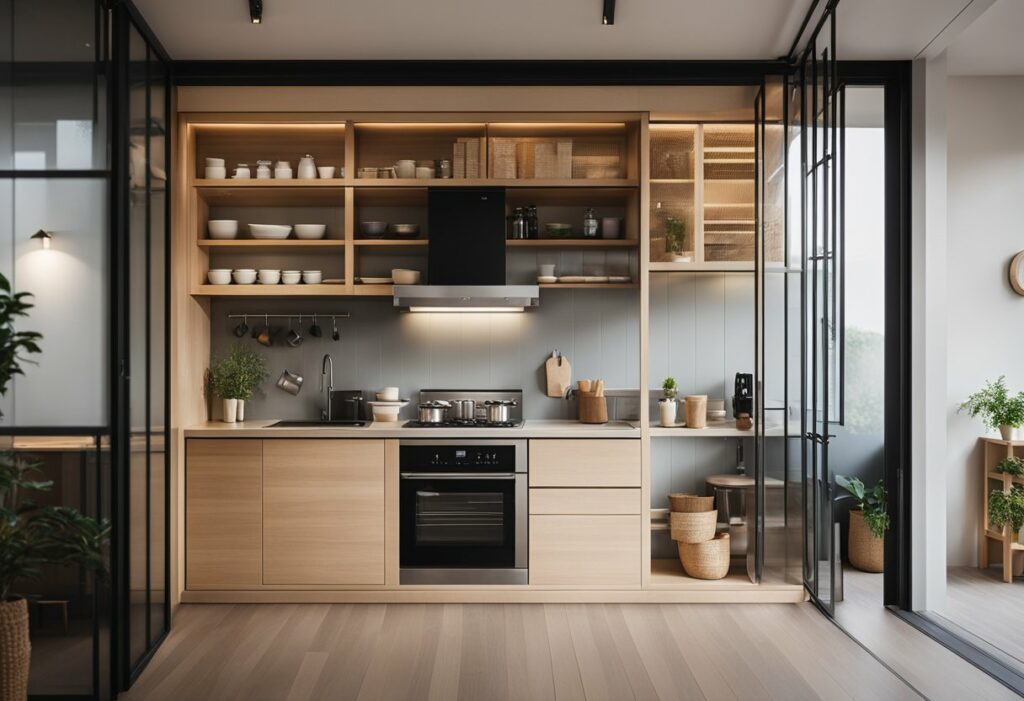Japanese Kitchen Design for Small Spaces: Maximising Functionality and Style
Are you struggling to make the most of your small kitchen space? Look no further than Japanese kitchen design. With its minimalist aesthetics and efficient use of space, Japanese kitchen design is the perfect solution for those looking to maximise functionality in a small area.
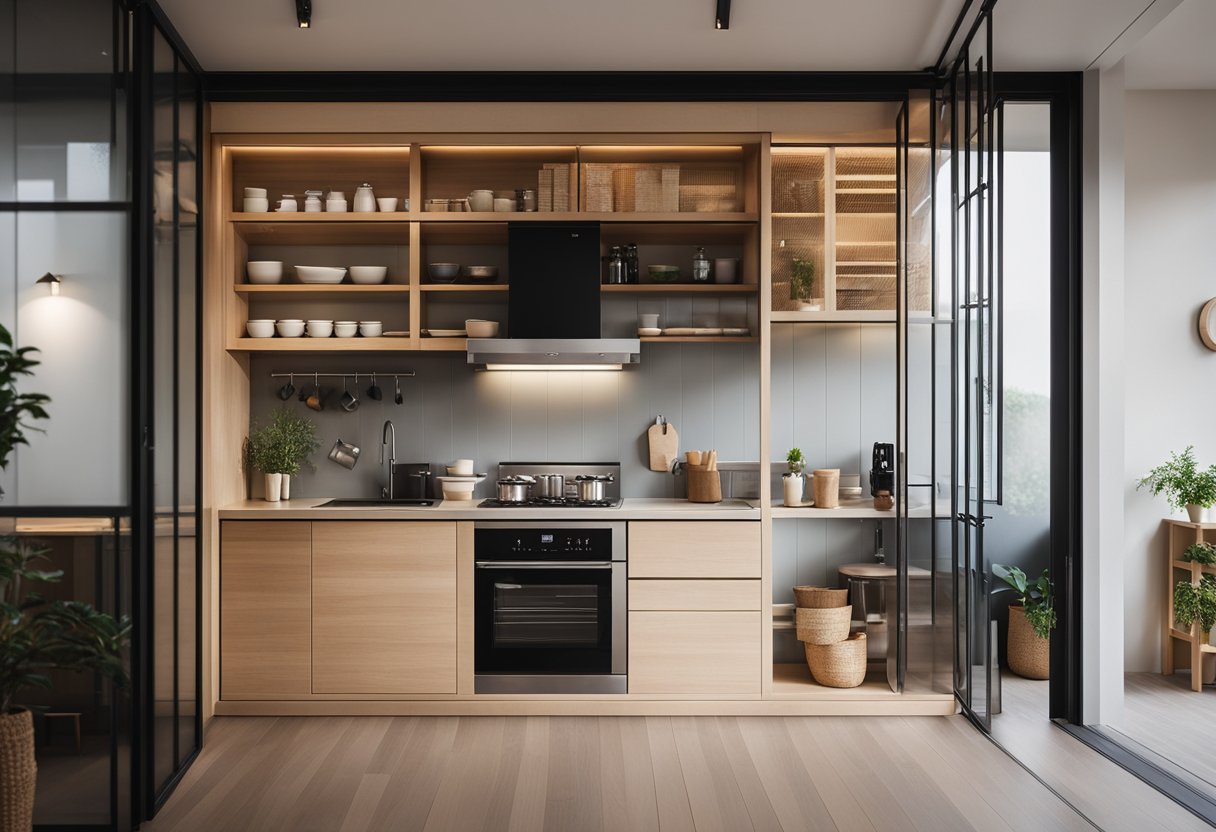
The key to Japanese kitchen design is simplicity. Rather than cluttering the space with unnecessary items, Japanese kitchens focus on the essentials. This means that everything in the kitchen has a specific purpose and is designed to work together seamlessly. By removing excess clutter, Japanese kitchens are able to create a sense of calm and order, even in the smallest of spaces.
When it comes to materials, Japanese kitchens favour natural, sustainable options such as bamboo, wood and stone. These materials not only look beautiful but are also incredibly durable, making them the perfect choice for a hardworking kitchen. So if you’re looking to create a functional, beautiful and sustainable kitchen in a small space, Japanese kitchen design is the perfect solution.
Key Takeaways
- Japanese kitchen design is perfect for maximising space and functionality in small kitchens.
- Minimalist aesthetics and efficient use of space are key features of Japanese kitchen design.
- Natural, sustainable materials such as bamboo, wood and stone are favoured in Japanese kitchen design.
Maximising Space and Functionality
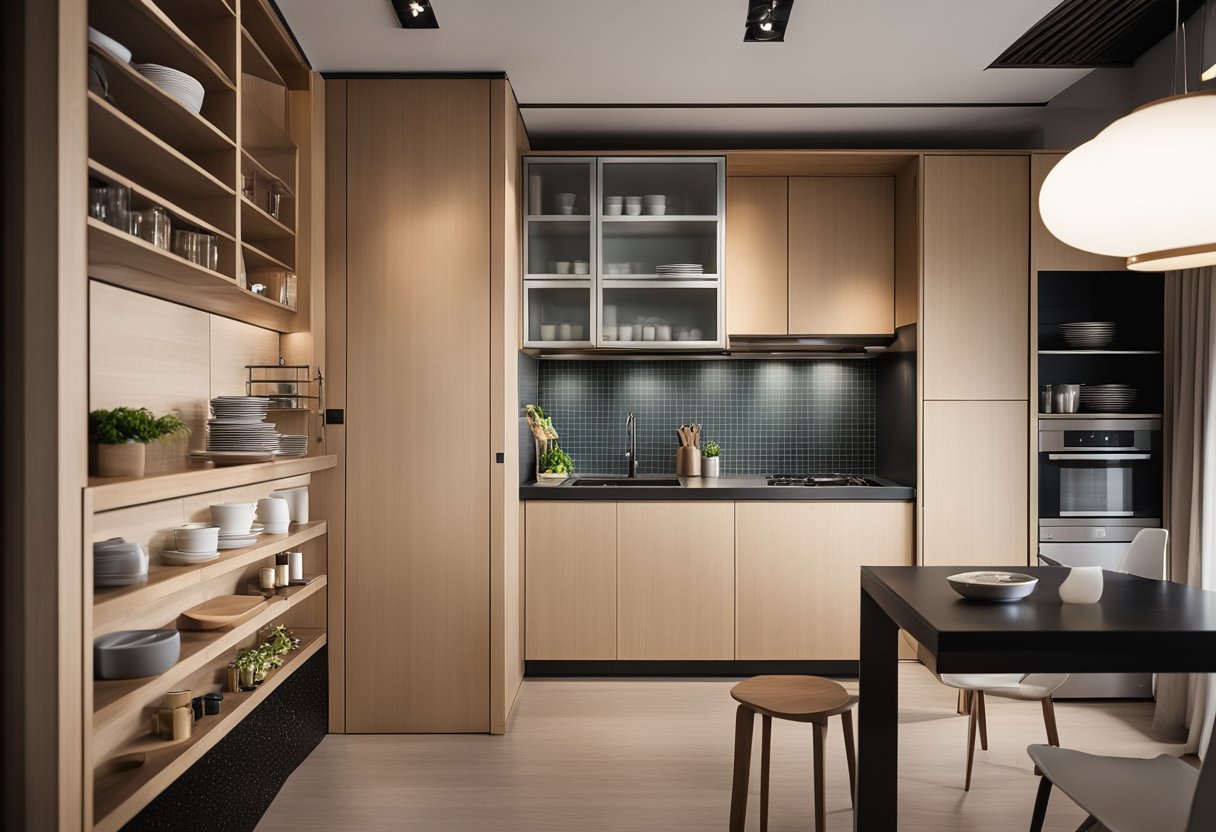
If you’re working with a small kitchen space, it’s important to make the most of every inch. With Japanese kitchen design, minimalism is key, so you’ll want to focus on innovative storage solutions, smart layout choices, and compact appliances to maximise the functionality of your kitchen.
Innovative Storage Solutions
One of the most important aspects of Japanese kitchen design is storage. In a small space, you’ll need to get creative with your storage solutions. Consider installing open shelves or hanging pot racks to make the most of your vertical space. You can also utilise the space above your cabinets for storage.
Smart Layout Choices
The layout of your kitchen can make a big difference in how functional it is. Consider an open-concept layout, which can make your kitchen feel larger and more spacious. Another great layout choice is a kitchen island, which can provide extra counter space and storage.
Compact Appliances
When it comes to appliances, you’ll want to choose models that are compact and efficient. A rice cooker is a must-have for any Japanese kitchen, and it can save you valuable counter space. A toaster oven is another great choice, as it can be used for a variety of tasks and takes up less space than a traditional oven. And don’t forget about your refrigerator – choose a model that is appropriately sized for your space.
By implementing these tips, you can create a functional and stylish Japanese kitchen design in even the smallest of spaces.
Aesthetics and Materials
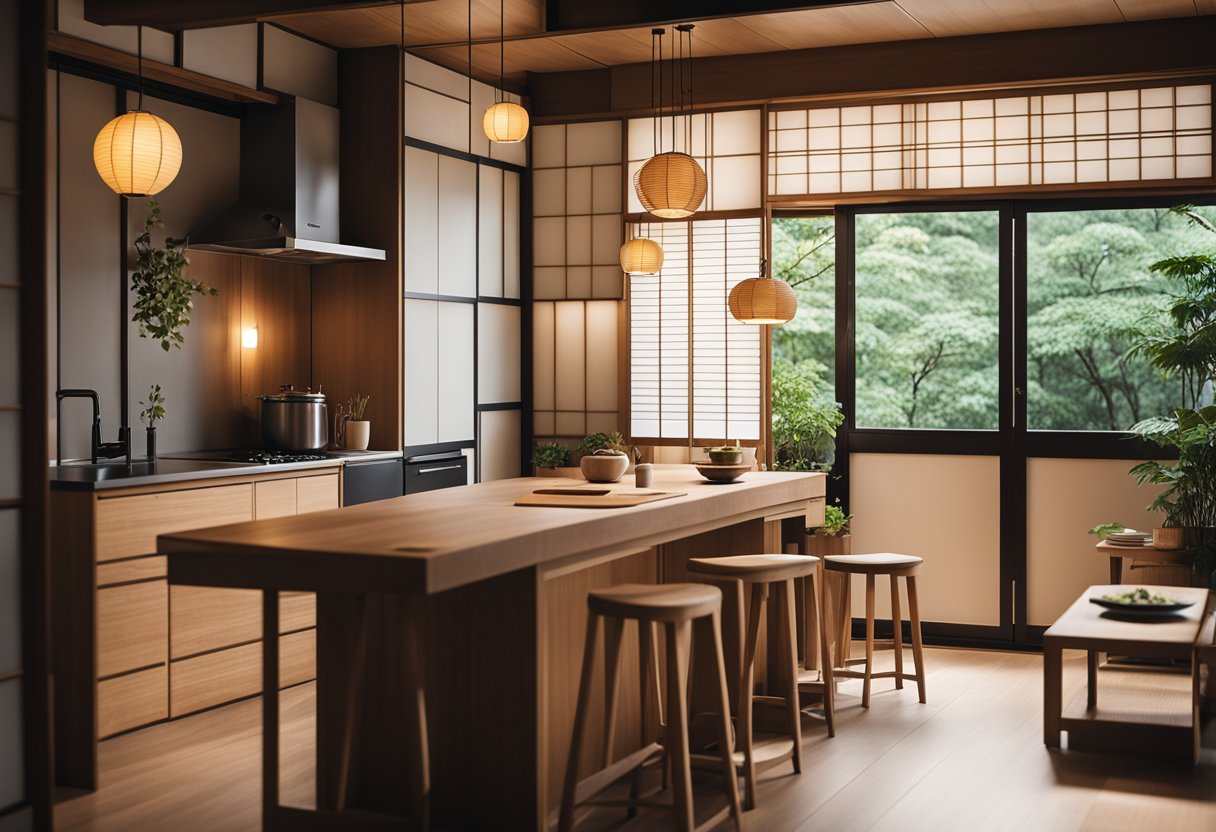
When it comes to Japanese kitchen design for small spaces, aesthetics and materials play a crucial role. Minimalist design, simple and clean lines, and natural materials are the key elements of Japanese kitchen interior design. In this section, we will delve into the colour palette, texture harmony, and natural materials used in Japanese kitchen design.
Colour and Texture Harmony
The colour palette of a Japanese kitchen is usually based on neutral colours such as beige, gray, black, brown, and olive. These colours create a calming and peaceful atmosphere, which is essential in a small kitchen. The use of contrasting colours is also common in Japanese kitchen design. For example, black and white or black and wood create a beautiful contrast that adds depth and character to the kitchen.
Texture harmony is another crucial element of Japanese kitchen design. The use of different textures such as wood, bamboo, and tatami mats creates a beautiful and harmonious contrast. The texture of wood and bamboo adds warmth and naturalness to the kitchen, while tatami mats provide a soft and comfortable surface to walk on.
Natural Materials and Traditional Elements
Natural materials are the cornerstone of Japanese kitchen design. Wood and bamboo are the most commonly used materials in Japanese kitchen design. They are durable, sustainable, and add natural warmth to the kitchen. The use of shoji screens is another traditional element of Japanese kitchen design. They are used to separate the kitchen from the living area while allowing natural light to flow through.
In summary, Japanese kitchen design for small spaces is all about simplicity, natural materials, and texture harmony. The use of neutral colours, natural materials, and traditional elements such as tatami mats and shoji screens create a beautiful and peaceful atmosphere in your kitchen.
Frequently Asked Questions
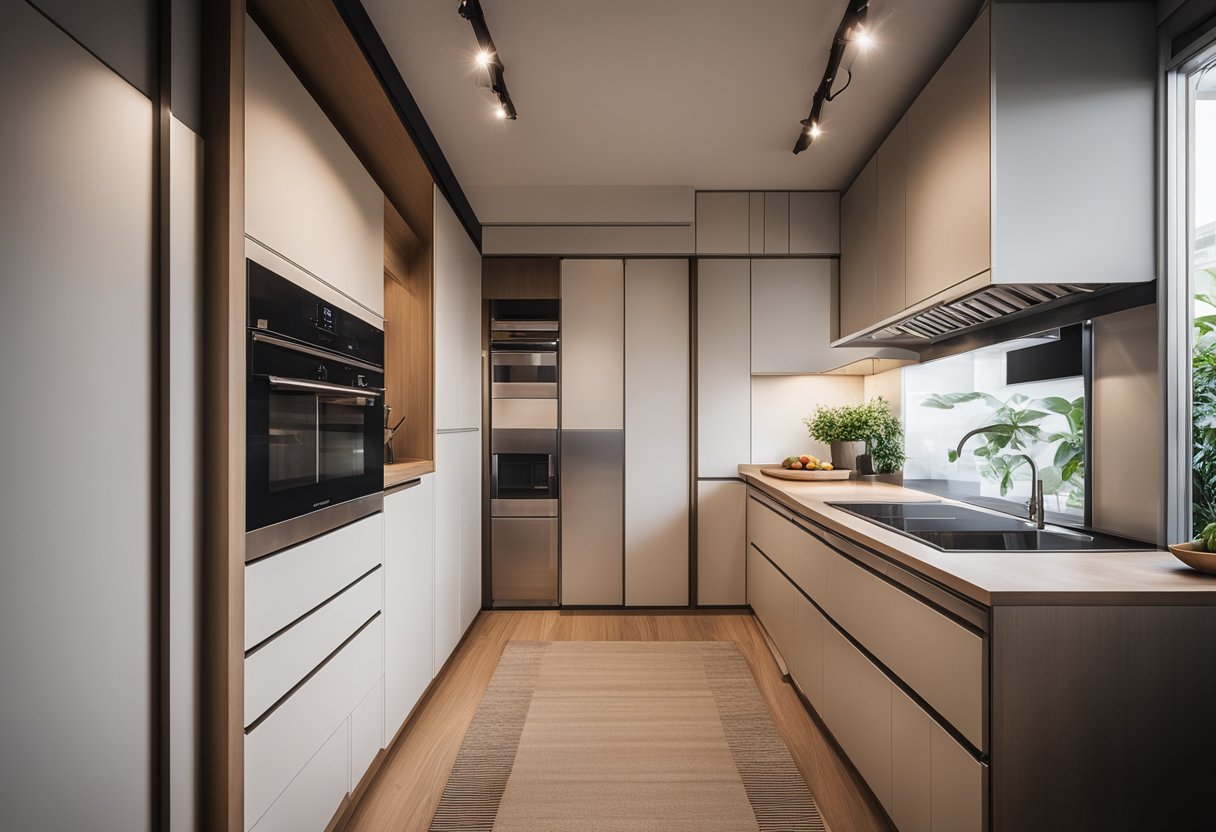
How can I infuse modern Japanese aesthetics into my compact kitchen space?
If you want to infuse modern Japanese aesthetics into your compact kitchen space, focus on minimalism, neutral colours, and natural materials. Consider using light wood or bamboo for cabinets and countertops, and incorporate clean lines and simple shapes. Open shelving can also add to the minimalist look of a Japanese-inspired kitchen.
What are the essential features of a traditional Japanese kitchen suitable for small apartments?
A traditional Japanese kitchen is designed to be compact and efficient, with a focus on functionality. Some essential features include a low, built-in table for food preparation, a sink with a faucet that can be moved around, and a built-in stove or hotplate. Additionally, storage is key in a Japanese kitchen, so consider incorporating sliding doors and shelves to maximise space.
Which space-saving Japanese kitchen cabinets are perfect for a micro kitchen layout?
Japanese kitchen cabinets are designed to maximise space and functionality. For a micro kitchen layout, consider using tansu-style cabinets, which are tall and narrow with multiple drawers and compartments for storage. Another option is to use modular cabinets that can be customised to fit your specific kitchen layout.
What innovative Japanese kitchen equipment is designed specifically for tiny kitchens?
Innovative Japanese kitchen equipment designed for tiny kitchens includes compact appliances like induction cooktops, rice cookers, and combination microwave-ovens. Additionally, Japanese-style knife sets with compact storage options can save valuable counter space.
How can I maximise functionality in a small kitchen area drawing inspiration from Japanese design?
To maximise functionality in a small kitchen area, focus on simplicity and efficiency. Incorporate built-in storage and multi-functional furniture, such as a table that can be used for food preparation and dining. Consider using sliding doors and partitions to maximise space and create privacy when needed.
What are the smartest design solutions for organising a small Japanese-style kitchen efficiently?
Smart design solutions for organising a small Japanese-style kitchen efficiently include using hanging pot racks and magnetic knife strips to free up counter space. Incorporating pull-out drawers and shelves can also maximise storage and make items more accessible. Finally, consider using baskets and other storage containers to keep items organised and easily accessible.

